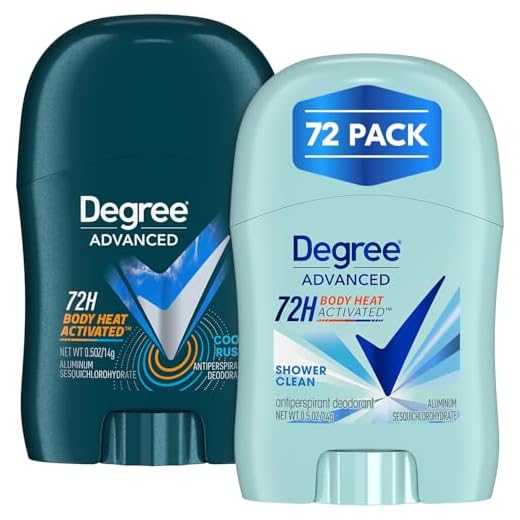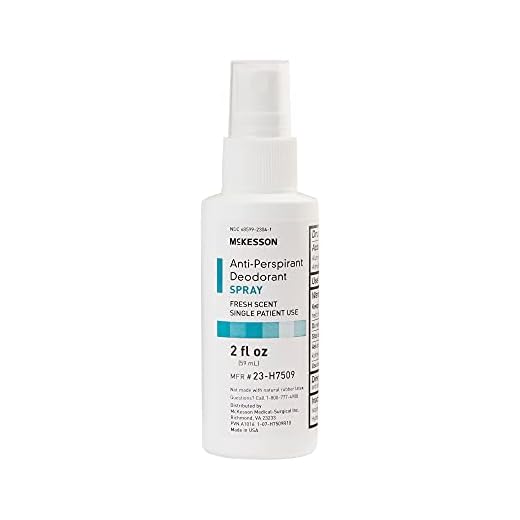







Travelers should note that spray products are permissible in cabin bags, provided they adhere to specific regulations. The maximum container size for aerosol items is limited to 100 milliliters (3.4 ounces). All such containers must fit within a single clear, resealable plastic bag, which should not exceed one liter in volume.
Before heading to the airport, verify the contents of travel kits. It’s advisable to place the spray container at the top of the bag for easier access during security checks. Be prepared for potential additional screening, as personnel may need to inspect these items separately.
Check specific airline policies regarding the carriage of flammable substances, as some carriers may impose additional restrictions. Always stay informed of up-to-date guidelines from both security authorities and airline operators to ensure smooth passage through screening points.
Guidelines for Aerosol Products in Travel Carry-Ons
Transporting aerosol products, like sprays for personal hygiene, typically falls under strict regulations during air travel. Most airlines permit these items in limited quantities, emphasizing safety protocols due to flammability risks.
Regulatory Restrictions
- Volume limit: Individual containers should not exceed 100 ml (3.4 oz).
- Maximum allowed: Total volume of all liquids, aerosols, and gels should not surpass 1 liter.
- Packaging: Place containers in a transparent, resealable plastic bag for inspection at security checkpoints.
Recommendations for Smooth Travel
- Check specific airline policies, as they may differ.
- Consider alternatives, such as solid stick versions, to avoid hassles.
- Always declare any larger quantities separately if necessary.
For additional insights on equipment comparisons, consider this article on are dslr cameras better than phone cameras.
Understanding Airline Regulations on Aerosols
Transporting pressurized containers is subject to specific limits set by aviation authorities. Most airlines allow individuals to carry liquids, gels, and sprays, but these must conform to size restrictions. Typically, the volume of each item should not exceed 100 milliliters (3.4 ounces), and all items must fit within a one-liter transparent, resealable bag.
Ensure that any sprayed products comply with the classification of personal care items. Non-flammable and non-toxic variants are more likely to gain clearance. Additionally, international travel may involve stricter guidelines depending on the departure and arrival countries. It’s vital to verify local regulations, as discrepancies can exist between airlines and destinations.
Be aware that any container with a specified pressure rating might be classified differently. Appliances producing propulsion or containing volatile substances may face additional scrutiny. If in doubt, consider alternative forms, such as solid or roll-on options.
Lastly, pack items securely to prevent accidental activation during transit. Shipping larger quantities typically necessitates checking bags instead of carry-on. Assessing regulations before travel ensures adherence to policies and aids in avoiding unnecessary complications at security checkpoints.
Volume Restrictions for Aerosol Products
Volume limits for aerosol items typically cap each container at 100 milliliters (3.4 ounces). Passengers must ensure that all such containers fit within a single, transparent, resealable plastic bag, which should not exceed 1 liter in total capacity.
Container Guidelines
Containers exceeding 100 milliliters are generally prohibited in cabin baggage, regardless of the amount of product inside. If a product is packaged in a container larger than this limit, it may be confiscated during security screening.
Quantity Limits
Travelers are usually allowed one quart-sized bag filled with appropriately sized items. This ensures compliance with airline security regulations while maximizing the number of permissible products.
| Container Size | Status |
|---|---|
| Under 100 ml | Permitted |
| Over 100 ml | Not allowed |
| 1-liter bag | Required |
Always verify specific airline policies before traveling, as certain carriers may impose additional restrictions or requirements regarding volume. Keeping within these guidelines ensures smoother transit through security checkpoints.
Packaging Requirements for Aerosol Products
Containers must comply with specific guidelines to ensure safe transport. All pressurized vessels should feature a secure cap or cover to prevent accidental discharge. Clear labeling is necessary, indicating the contents and any pertinent warnings.
Each unit must not exceed the maximum volume restrictions imposed by airlines. Typically, individual containers should not be larger than 100ml, and all items must fit within a single, transparent, resealable plastic bag with a maximum volume of 1 liter.
The packaging should be robust, able to withstand typical travel conditions without risk of damage or leakage. It’s advisable to keep products in their original boxes when possible, which provide additional protection during transit.
When packing, ensure that the items are cushioned with soft materials to avoid impacts. Take care to avoid packing other toiletries that may also be considered hazardous, as interactions could occur.
For parents looking for convenience, consider choosing the best rain cover for umbrella stroller, ensuring all belongings remain dry during travel.
For outdoor enthusiasts, selecting the best wind resistant rain umbrella ensures protection against unpredictable weather, keeping all items secure.
Always verify the latest airline policies prior to your trip, as these guidelines can vary by carrier. Adhering to packaging regulations will facilitate a smoother travel experience.
Alternatives to Aerosol Deodorants for Travel
Solid sticks emerge as a reliable option for those seeking convenience. Compact and spill-resistant, these designs fit seamlessly into packing scenarios.
Cream formulations offer versatility and often contain natural ingredients. They can be easily stored in small jars or tubes, ensuring compliance with volume restrictions.
Roll-on varieties allow for controlled application and are less likely to leak. Their packaging is sturdy, making them suitable for travel without concerns over damage or spillage.
Powder deodorants provide an additional alternative. Typically offered in jars or shaker bottles, they absorb moisture effectively while remaining lightweight.
Natural crystals serve as eco-friendly substitutes. These mineral-based solutions usually come in reusable containers, promoting sustainability during travels.
Wipes designed for armpits present a portable option, easily fitting into any bag. Their convenience makes them suitable for freshening up during the day.
Consider solid fragrance bars for an added dimension. Not only do these provide scent, they can also have deodorizing properties, enhancing comfort while on the move.
Ultimately, selecting any of these alternatives ensures freshness without compromising travel regulations, granting peace of mind while jet-setting.
Tips for Traveling with Aerosol Items
Follow these guidelines to ensure a smooth experience while carrying pressurized products:
- Check airline policies before packing. Regulations can vary greatly between carriers.
- Limit individual container volume to 100ml or less. Total volume in the carrying case must not exceed 1 liter.
- Store containers in a clear, resealable plastic bag. Ensure it is easily accessible for screening.
- Secure items properly to prevent leaks or damage. Consider placing them in a protective pouch.
- Avoid over-packing bags to minimize pressure on the contents during travel.
Alternative Solutions
Consider these substitutes if aerosol options are restricted or inconvenient:
- Solid stick options offer portable and spill-proof alternatives.
- Roll-on formulas provide similar application with less volume.
- Liquid sprays in travel-sized bottles comply with liquid regulations.
- Eco-friendly options, such as refillable containers, align with sustainability practices.
Preparation and awareness of regulations create a hassle-free experience while transporting pressurized items.
FAQ:
Can I bring aerosol deodorant in my hand luggage on a flight?
Yes, you can bring aerosol deodorant in your hand luggage, but there are specific regulations you need to follow. Most airlines allow aerosol deodorants as long as they are in containers of 100 ml (3.4 ounces) or less. All liquids, gels, and aerosols must fit into a single, clear, resealable plastic bag with a capacity of no more than 1 liter. Make sure to check the regulations of the airline and the airport you are flying from, as there could be additional restrictions.
What should I do if my aerosol deodorant exceeds the limit for hand luggage?
If your aerosol deodorant exceeds the 100 ml limit, you have a few options. You can either transfer some of the deodorant into a smaller travel-sized container that complies with the regulations, or you may choose to pack it in your checked luggage, where larger containers are typically allowed. Always remember to check your airline’s policies regarding checked baggage to avoid any issues at the airport.







